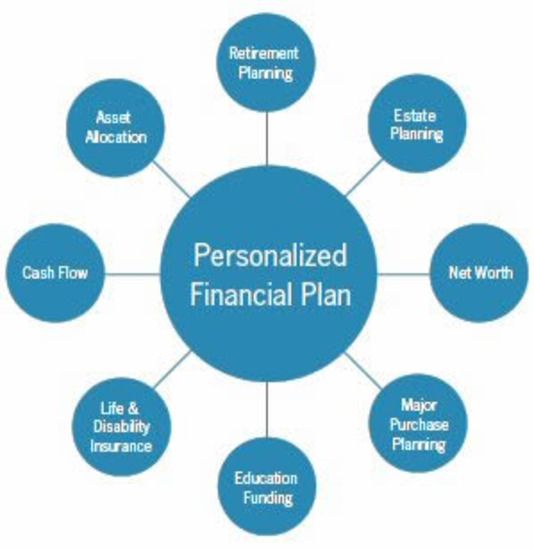Retirement planning is a multistep process that evolves over time. To have a comfortable, secure—and fun—retirement, you need to build the financial cushion that will fund it all. The fun part is why it makes sense to pay attention to the serious—and perhaps boring—part: planning how you’ll get there.
Retirement planning starts with thinking about your retirement goals and how long you have to meet them. Then you need to look at the types of retirement accounts that can help you raise the money to fund your future. As you save that money, you have to invest it to enable it to grow.
The last part of planning is taxes: If you’ve received tax deductions over the years for the money that you’ve contributed to your retirement accounts, then a significant tax bill awaits when you start withdrawing those savings. There are ways to minimize the retirement tax hit while you save for the future—and to continue the process when that day arrives and you actually stop working.
We’ll get into all of these issues here. But first, start by learning the five steps that everyone should take, no matter what their age, to build a solid retirement plan.
Before anyone starts crunching the numbers on their retirement goals, they will need a good idea of how much money they need to save.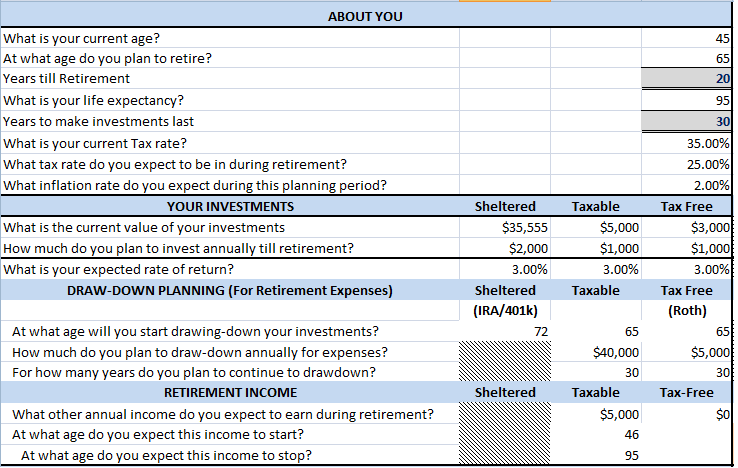 Naturally, this will depend on many situational factors, such as their annual income and the age when they plan to retire.
Naturally, this will depend on many situational factors, such as their annual income and the age when they plan to retire.
While there is no fixed rule about how much money to save, many retirement experts offer rules of thumb such as saving about $1 million, or 12 years of one's pre-retirement annual income. Others recommend the 4% rule, which suggests that retirees should spend no more than 4% of their retirement savings each year in order to ensure a comfortable retirement.
Since everyone's circumstances are different, it is worth sitting down to calculate the ideal retirement savings for your own situation.
Order your copy of the print edition of Investopedia's Retirement Guide for more assistance in building the best plan for your retirement.
As you begin to think about retirement, it is worthwhile to consider some of the factors that will affect your retirement goals. For example: what are your family plans? For many people, starting a family is a central life goal, but having children can also put a large dent in your savings.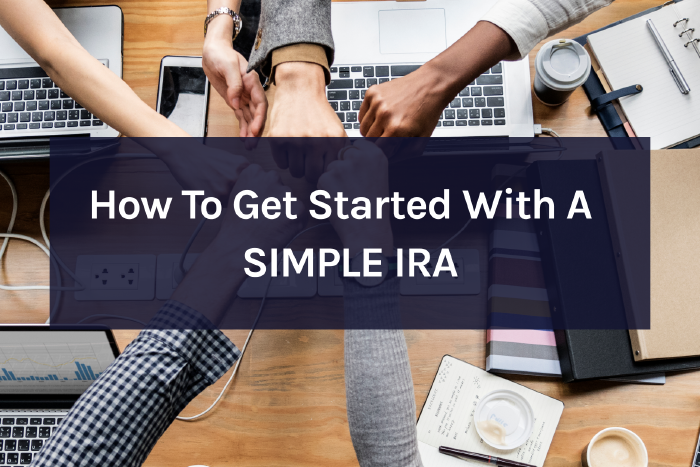 For that reason, the type of family you hope to have will play a factor in your retirement planning.
For that reason, the type of family you hope to have will play a factor in your retirement planning.
Likewise, it is also worth thinking about your plans for retirement, including any changes to your home or residence. Many people dream of travel during retirement, and while it can be an exciting adventure, extensive travel will eat away at your retirement savings faster than staying at home. On the other hand, moving to a country with an extremely low cost of living may allow you to stretch out your savings while enjoying a high living standard.
Finally, one should also consider the different types of tax-advantaged retirement accounts. Most Americans qualify for social security, but those benefits are rarely enough to support all of their expenses in retirement.
While pension funds were once the norm for skilled professionals, they have largely been replaced by self-funded plans like 401(k) or IRA accounts. Since these have a maximum contribution limit, your retirement strategy will depend on what types of tax-advantaged accounts are available to you.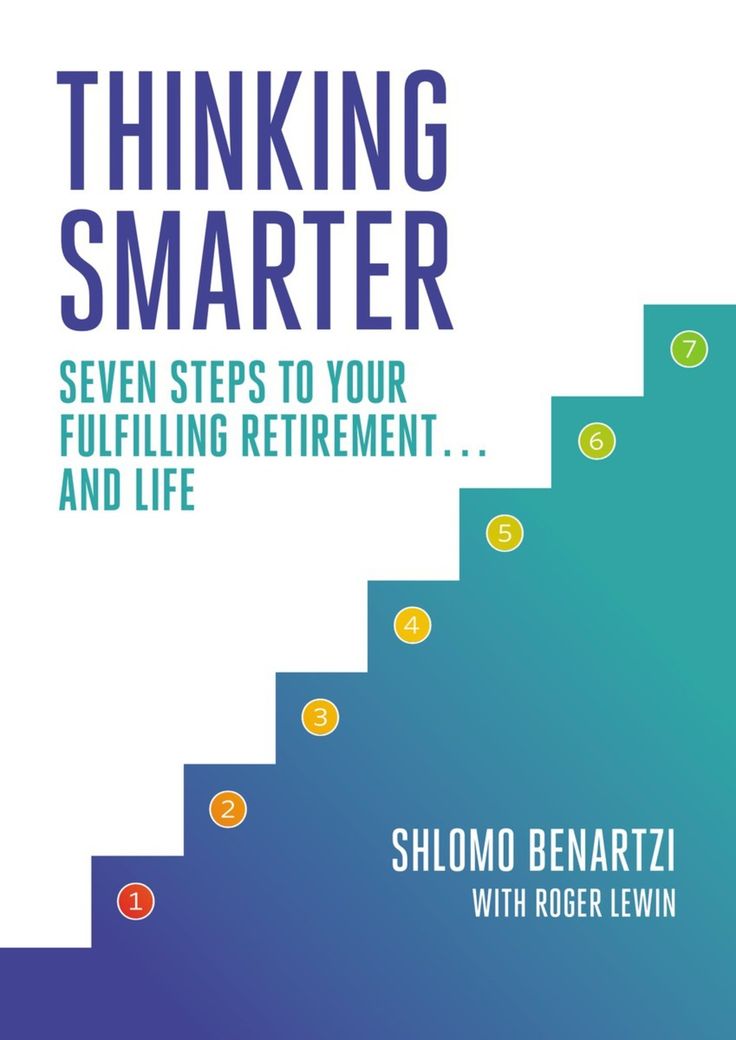
Once you have thought these factors through, these are the next steps for planning your retirement:
Your current age and expected retirement age create the initial groundwork for an effective retirement strategy. The longer the time from today to retirement, the higher the level of risk that your portfolio can withstand. If you’re young and have 30-plus years until retirement, you can have the majority of your assets in riskier investments, such as stocks. There will be volatility, but stocks have historically outperformed other securities, such as bonds, over long time periods. The main word here is “long,” meaning at least more than 10 years.
Additionally, you need returns that outpace inflation so you can maintain your purchasing power during retirement. “Inflation is like an acorn. It starts out small, but given enough time, can turn into a mighty oak tree,” says Chris Hammond, a Savannah, Tenn., financial advisor and founder of RetirementPlanningMadeEasy. com.
com.
“We’ve all heard—and want—compound growth on our money,” Hammond adds. “Well, inflation is like ‘compound anti-growth,’ as it erodes the value of your money. A seemingly small inflation rate of 3% will erode the value of your savings by 50% over approximately 24 years. Doesn’t seem like much each year, but given enough time, it has a huge impact.”
In general, the older you are, the more your portfolio should be focused on income and the preservation of capital. This means a higher allocation in less risky securities, such as bonds, that won’t give you the returns of stocks but will be less volatile and provide income that you can use to live on. You will also have less concern about inflation. A 64-year-old who is planning on retiring next year does not have the same issues about a rise in the cost of living as a much younger professional who has just entered the workforce.
You should break up your retirement plan into multiple components. Let’s say a parent wants to retire in two years, pay for a child’s education at age 18, and move to Florida. From the perspective of forming a retirement plan, the investment strategy would be broken up into three periods: two years until retirement (contributions are still made into the plan), saving and paying for college, and living in Florida (regular withdrawals to cover living expenses).
From the perspective of forming a retirement plan, the investment strategy would be broken up into three periods: two years until retirement (contributions are still made into the plan), saving and paying for college, and living in Florida (regular withdrawals to cover living expenses).
A multistage retirement plan must integrate various time horizons, along with the corresponding liquidity needs, to determine the optimal allocation strategy. You should also be rebalancing your portfolio over time as your time horizon changes.
You might not think that saving a few bucks here and there in your 20s means much, but the power of compounding will make it worth much more by the time you need it.
Having realistic expectations about post-retirement spending habits will help you define the required size of a retirement portfolio. Most people believe that after retirement, their annual spending will amount to only 70% to 80% of what they spent previously.
Such an assumption is often proven unrealistic, especially if the mortgage has not been paid off or if unforeseen medical expenses occur. Retired adults also sometimes spend their first years splurging on travel or other bucket-list goals.
“For retired adults to have enough savings for retirement, I believe that the ratio should be closer to 100%,” says David G. Niggel, CFP, ChFC, AIF, founder, president, and CEO of Key Wealth Partners LLC in Litilz, Pa. “The cost of living is increasing every year—especially healthcare expenses. People are living longer and want to thrive in retirement. Retired adults need more income for a longer time, so they will need to save and invest accordingly.”
As, by definition, retired adults are no longer at work for eight or more hours a day, they have more time to travel, go sightseeing, shop, and engage in other expensive activities. Accurate retirement spending goals help in the planning process as more spending in the future requires additional savings today.
“One of the factors—if not the largest—in the longevity of your retirement portfolio is your withdrawal rate. Having an accurate estimate of what your expenses will be in retirement is so important because it will affect how much you withdraw each year and how you invest your account. If you understate your expenses, you easily outlive your portfolio, or if you overstate your expenses, you can risk not living the type of lifestyle you want in retirement,” says Kevin Michels, CFP, EA, financial planner, and president of Medicus Wealth Planning in Draper, Utah.
Your longevity also needs to be considered when planning for retirement, so you don’t outlast your savings. The average life span of individuals is increasing.
Additionally, you might need more money than you think if you want to purchase a home or fund your children’s education post-retirement. Those outlays have to be factored into the overall retirement plan. Remember to update your plan once a year to make sure that you are keeping on track with your savings.
“Retirement planning accuracy can be improved by specifying and estimating early retirement activities, accounting for unexpected expenses in middle retirement, and forecasting what-if late-retirement medical costs,” explains Alex Whitehouse, AIF, CRPC, CWS, president, and CEO of Whitehouse Wealth Management in Vancouver, Wash.
Once the expected time horizons and spending requirements are determined, the after-tax real rate of return must be calculated to assess the feasibility of the portfolio producing the needed income. A required rate of return in excess of 10% (before taxes) is normally an unrealistic expectation, even for long-term investing. As you age, this return threshold goes down, as low-risk retirement portfolios are largely composed of low-yielding fixed-income securities.
If, for example, an individual has a retirement portfolio worth $400,000 and income needs of $50,000, assuming no taxes and the preservation of the portfolio balance, they are relying on an excessive 12. 5% return to get by. A primary advantage of planning for retirement at an early age is that the portfolio can be grown to safeguard a realistic rate of return. Using a gross retirement investment account of $1 million, the expected return would be a much more reasonable 5%.
5% return to get by. A primary advantage of planning for retirement at an early age is that the portfolio can be grown to safeguard a realistic rate of return. Using a gross retirement investment account of $1 million, the expected return would be a much more reasonable 5%.
Depending on the type of retirement account that you hold, investment returns are typically taxed. Therefore, the actual rate of return must be calculated on an after-tax basis. However, determining your tax status when you begin to withdraw funds is a crucial component of the retirement planning process.
Whether it’s you or a professional money manager who is in charge of the investment decisions, a proper portfolio allocation that balances the concerns of risk aversion and returns objectives is arguably the most important step in retirement planning. How much risk are you willing to take to meet your objectives? Should some income be set aside in risk-free Treasury bonds for required expenditures?
You need to make sure that you are comfortable with the risks being taken in your portfolio and know what is necessary and what is a luxury. “Don’t be a ‘micromanager’ who reacts to daily market noise,” advises Craig L. Israelsen, Ph.D., designer of 7Twelve Portfolio in Springville, Utah.
“Don’t be a ‘micromanager’ who reacts to daily market noise,” advises Craig L. Israelsen, Ph.D., designer of 7Twelve Portfolio in Springville, Utah.
“'Helicopter’ investors tend to overmanage their portfolios," Israelsen adds. "When the various mutual funds in your portfolio have a bad year, add more money to them. The mutual fund you are unhappy with this year may be next year’s best performer—so don’t bail out on it.”
“Markets will go through long cycles of up and down and, if you are investing money you won’t need to touch for 40 years, you can afford to see your portfolio value rise and fall with those cycles,” says John R. Frye, CFA, senior advisor at Carnegie Investment Counsel. “When the market declines, buy—don’t sell. Refuse to give in to panic. If shirts went on sale, 20% off, you’d want to buy, right? Why not stocks if they went on sale 20% off?”
The 2022 ceiling for assets in an estate that are exempt from federal estate taxes. Amounts above that limit are subject to estate taxes.
Amounts above that limit are subject to estate taxes.
Estate planning is another key step in a well-rounded retirement plan, and each aspect requires the expertise of different professionals, such as lawyers and accountants, in that specific field. Life insurance is also an important part of an estate plan and the retirement planning process. Having both a proper estate plan and life insurance coverage ensures that your assets are distributed in a manner of your choosing and that your loved ones will not experience financial hardship following your death. A carefully outlined plan also aids in avoiding an expensive and often lengthy probate process.
Tax planning is another crucial part of the estate planning process. If an individual wishes to leave assets to family members or a charity, the tax implications of either gifting or passing them through the estate process must be compared.
A common retirement plan investment approach is based on producing returns that meet yearly inflation-adjusted living expenses while preserving the value of the portfolio. The portfolio is then transferred to the beneficiaries of the deceased. You should consult a tax advisor to determine the correct plan for the individual.
The portfolio is then transferred to the beneficiaries of the deceased. You should consult a tax advisor to determine the correct plan for the individual.
“Estate planning will vary over an investor’s lifetime,” says Mark T. Hebner, founder and president of Index Fund Advisors Inc. in Irvine, Calif., and author of Index Funds: The 12-Step Recovery Program for Active Investors. “Early on, matters such as powers of attorney and wills are necessary. Once you start a family, a trust may be something that becomes an important component of your financial plan.
“Later on in life, how you would like your money disbursed will be of the utmost importance in terms of cost and taxes,” Hebner adds. “Working with a fee-only estate planning attorney can assist in preparing and maintaining this aspect of your overall financial plan.”
Risk tolerance is how much of a loss you’re willing to endure within your portfolio. Risk tolerance depends on a number of factors, including your financial goals, income, and age.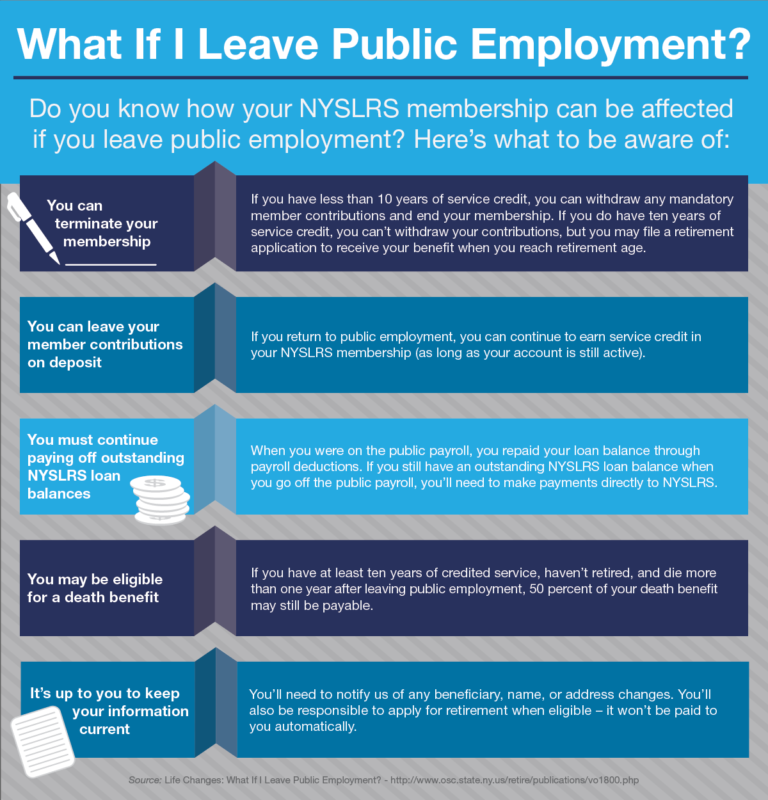
One rule of thumb is to save 15% of your gross annual earnings every year. In a perfect world, savings would begin in your 20s and last throughout your working years.
Age 65 is typically considered early retirement. When it comes to Social Security, you can start collecting retirement benefits as early as age 62. But you won’t receive full benefits as you would if you wait to collect them at full retirement age instead.
The burden of retirement planning is falling on individuals now more than ever. Few employees can count on an employer-provided defined-benefit pension, especially in the private sector. The switch to defined-contribution plans, such as 401(k)s, also means that managing the investments becomes your responsibility, not your employer’s.
One of the most challenging aspects of creating a comprehensive retirement plan is striking a balance between realistic return expectations and a desired standard of living.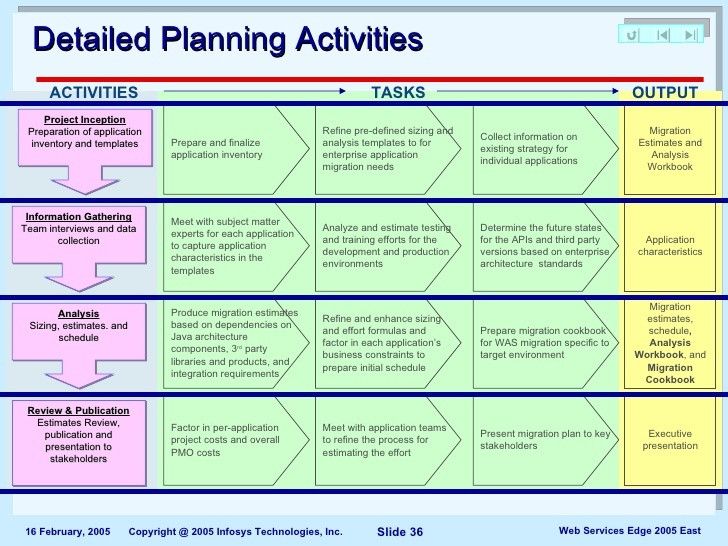 The best solution is to focus on creating a flexible portfolio that can be updated regularly to reflect changing market conditions and retirement objectives.
The best solution is to focus on creating a flexible portfolio that can be updated regularly to reflect changing market conditions and retirement objectives.
Josephine Flood | CNBC
On the surface, retirement planning hasn't changed all that much over the years. You work, you save and then you retire. But while the mechanics may be the same, today's savers are facing some challenges that previous generations didn't have to worry about.
First of all, life expectancy is longer, which means you'll need your money to last longer – potentially into your 90s. Bond yields are also much lower than they used to be, which means you can't buy a few fixed income instruments and earn a double-digit return. Then there is the health crisis due to the coronavirus pandemic.
This is compounded by the fact that more companies are moving away from defined benefit pensions —which guaranteed you a certain amount of money in your golden years — to defined contribution plans, which are more subject to market ups and downs.
watch now
So, how can you have the retirement you've always wanted? After all, retirees want to experience all the things they couldn't do when they were too busy working. Exotic travel vacations, marathon running, novel writing, spending more time with friends and family — the possibilities are almost endless. There are several steps, which we explain in this retirement guide, from budgeting and setting goals to choosing the right retirement savings account that will help you map out a plan that's right for you.
This guide lays out steps to focus on to get you working on retirement planning. Follow along from start to finish, or jump to the section(s) you want to learn more about.
Josephine Flood | CNBC
One of the hardest parts about preparing for retirement is thinking about life as a 70-something. A lot of people get so overwhelmed about saving for an unknown future, that they end up not saving anything at all. Thankfully, planning for retirement is not overly onerous, but you will need a road map — one that can evolve over time — to keep you on track.
Thankfully, planning for retirement is not overly onerous, but you will need a road map — one that can evolve over time — to keep you on track.
The first place to start is to think about what your life might look like in retirement. Sit down with a pen and paper and write down your retirement goals.
Then think about how much everything will cost. We don't know what prices will be like in the future, and in recent years inflation has run below the Fed's benchmark of 2%, but the average inflation rate in the U.S. over the past century (1913-2013) was 3.22%. So plan for higher prices in the decades ahead. You'll also want to factor in your day-to-day expenses, like housing costs, food and health care. Remember, some of the costly expenses you have now, such as a mortgage or childcare costs, will no longer exist, which could result in a decrease in your overall expenses as you near retirement.
Next, add up all the income you might receive in your post-working years. Factor in pension income if you have one, social security payments and any other dollars, such as rental income from a property, that may come your way.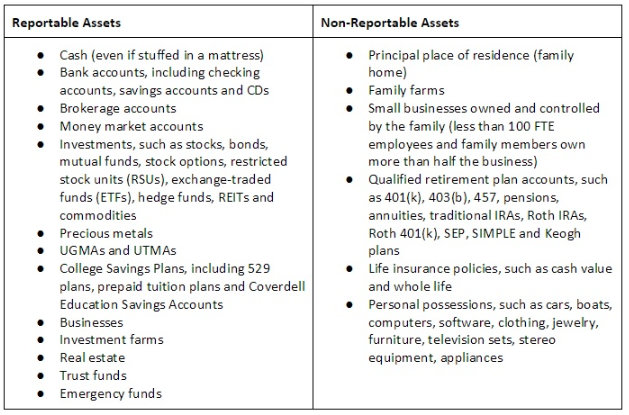 Match up revenue and expenses and you'll get a good idea of what you'll need to set aside for every year of your retirement.
Match up revenue and expenses and you'll get a good idea of what you'll need to set aside for every year of your retirement.
● Housing costs, including rent or a mortgage, heating, water and maintenance
● Health-care costs (Fidelity estimates that the average couple will need $295,000 in today's dollars for medical expenses in retirement, excluding long-term care.)
● Day-to-day living, such as food, clothing, transportation
● Entertainment, including restaurants, movies, plays
● Travel, including flights, hotels, gas if driving
● Possible life insurance
What's the magic number to hit for a golden retirement?
Over the years, finance experts have said that people need to save $1 million — that's recently climbed to $2 million as the cost of living and age demographics have changed. Some advise that you need to save 80% to 90% of your annual pre-retirement income, or that you need to save 12 times your pre-retirement salary.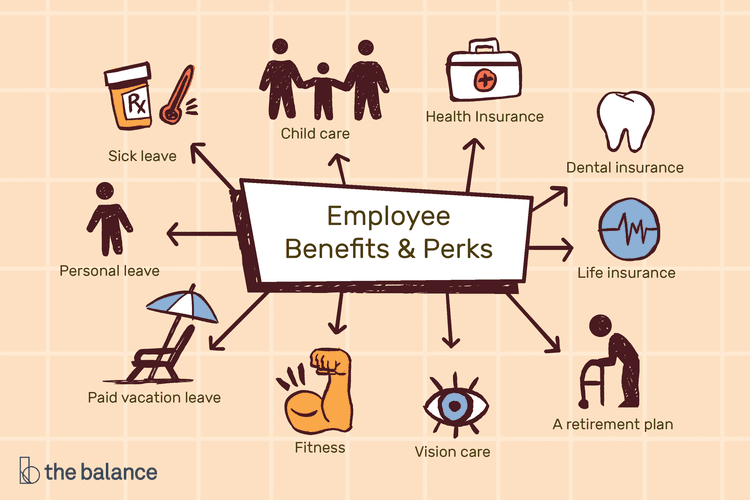 Those numbers and formulas can be a guide, but they're not gospel — everyone's situation will be different.
Those numbers and formulas can be a guide, but they're not gospel — everyone's situation will be different.
While starting early is always important – even $25 a month in your 20s is helpful – it's OK to set money aside for more immediate needs first and then start tackling retirement in your late 30s and early 40s. However, you don't want to wait much beyond that because you'll need time to put money into a retirement account for that money to grow. The longer you wait the more you'll have to sock away yearly making the challenge a lot more difficult.
watch now
This is your current budget, which takes into account all of your present-day income and expenses. While you should have some idea as to what you'll need to save per month based on your retirement goals, you also need to make sure that you have that money to save. It's a good idea to put retirement savings as a line item in your budget, just like food and shelter costs, so that you can set aside those funds every month.
This is a tool you can set up between your checking account and your retirement account so you don't forget to save. Set it up so that on the same day every month — maybe it's the day you get paid — funds you're earmarking for the future go from your bank account into your investments. By doing it this way, there's no risk of you spending that money.
Having a separate emergency account — usually with about three to six months of salary saved up — will allow you to cover any unexpected costs without throwing your retirement plans out of whack.
One goal for everyone should be to reach 65 debt-free. That includes credit card debt — and especially the high-interest reward card kind — car and mortgage loans, any student and other big loans. The reason is simple: you don't want to be going into your non-earning years owing money.
| IRA | Roth IRA | 401(k) | Roth 401(k) | Simple IRA | SEP | |
|---|---|---|---|---|---|---|
| Pre-tax | ✓ | ✓ | ✓ | ✓ | ||
| After-tax | ✓ | ✓ | ||||
| Taxed upon withdrawl | ✓ | ✓ | ✓ | ✓ | ||
| Contribution limit | $6,000 | $6,000 | $19,500 | $19,500 | $13,500 | $57,000 |
| Contribution limit for 50 plus | $7,000 | $7,000 | $26,500 | $26,500 | $16,000 | N/A |
10% tax hit if money withdrawn before 59. 5 5 | ✓ | ✓ | ✓ | |||
| 72 withdrawl age | ✓ | ✓ | ✓ | ✓ | ||
| Indivudal account | ✓ | ✓ | ||||
| Employer-offered account | ✓ | ✓ | ✓ | ✓ | ||
| Employer match maximum without catch-up | $37,500 | $37,500 | 3% of compensation | $57,000 or 25% of net earnings |
Source: Source: CNBC
Setting aside a certain amount of money every month is, of course, the most critical part of retirement savings. But you won't reach your goal without putting that money into the market. One reason to invest is because you want to take advantage of the power of compounding, which is when gains grow on top of other gains. For instance, if you invest $100 in one year and it goes to $110 the next, your next year's gains will be on top of the $110, not the original amount you put in.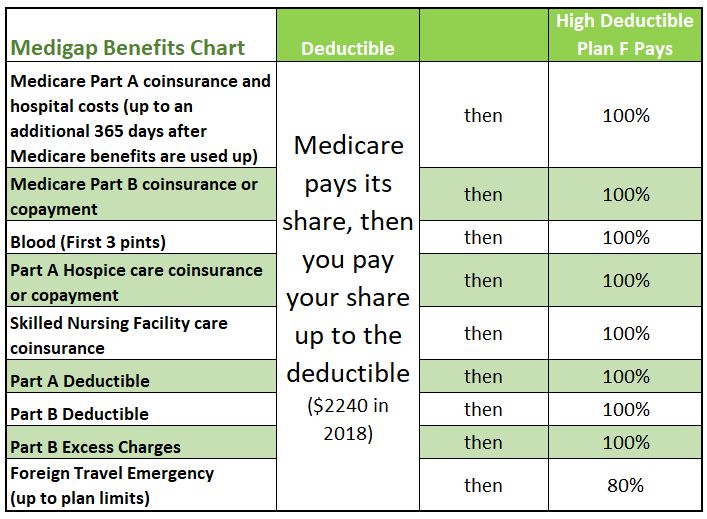 Over time, that compound growth can really boost returns. No matter what account you use, your investments will compound year after year. (Losses can compound as well, but, fortunately, over time, markets have climbed.)
Over time, that compound growth can really boost returns. No matter what account you use, your investments will compound year after year. (Losses can compound as well, but, fortunately, over time, markets have climbed.)
watch now
How much you can save and what tax you may have to eventually pay, though, does change depending on the account.
High-yield savings account
It's risk-free — money inside of a federally-insured savings account does not get invested in stocks or bonds — but you'll make next to nothing on the funds in the account. Currently, the highest-yielding savings accounts are under 1% on the dollars saved, and have been trending down with current Federal Reserve policy to keep its benchmark rate lower for longer. Your money should grow more over time in a more traditional investment savings vehicle.
Traditional Individual Retirement Account (Traditional IRA)
The IRA is a tax-advantaged investing tool for individuals to earmark their retirement savings. Depending on the individual's employment status, IRAs can be of various types and have different tax liabilities. As the name suggests, it's an individual account that you open and contribute to yourself. One of the benefits of the traditional IRA, as it's called, is that contributions are, generally, tax-deductible. So, for example, if you contribute $6,000, your taxable income will decrease by the same amount.
Depending on the individual's employment status, IRAs can be of various types and have different tax liabilities. As the name suggests, it's an individual account that you open and contribute to yourself. One of the benefits of the traditional IRA, as it's called, is that contributions are, generally, tax-deductible. So, for example, if you contribute $6,000, your taxable income will decrease by the same amount.
As well, the money can grow inside the account on a tax-deferred basis, which means you don't have to pay tax on any investments until you withdraw. That allows your money to compound at a faster rate than it otherwise would. You will have to pay tax on the amount you take out of the account, but it's based on your current year's tax rate. That's a good thing: since you typically earn little income in retirement, you'll be in a lower tax bracket, which means your tax hit on those withdrawals will be minor. (There is usually a 10% penalty for withdrawing funds before you turn 59 1/2 years-old, though you can remove up to $100,000 tax-free if you've been negatively impacted by Covid-19. See the IRS website for more.)
See the IRS website for more.)
Rules regarding maximum contributions and income limits for IRAs can change annually. As for how much you can contribute, currently you're allowed to invest $6,000 per year, though those 50 and older can save up to $7,000 a year using what's called catch-up contributions. Once you turn 72, though, you must start removing money from your IRA. The minimum required distribution will vary based on your account size and life expectancy, so talk to an accountant or an advisor before withdrawing. If you don't withdraw the required amount you could get hit with a hefty tax penalty.
Roth IRA
Roth IRAs are different than traditional IRAs in two meaningful ways. The first is that contributions are made with after-tax dollars, which means you don't get a tax deduction when you invest. The upside is that when it comes time to withdraw you will not owe the IRS a thing. All of your contributions can, therefore, grow tax-free over time.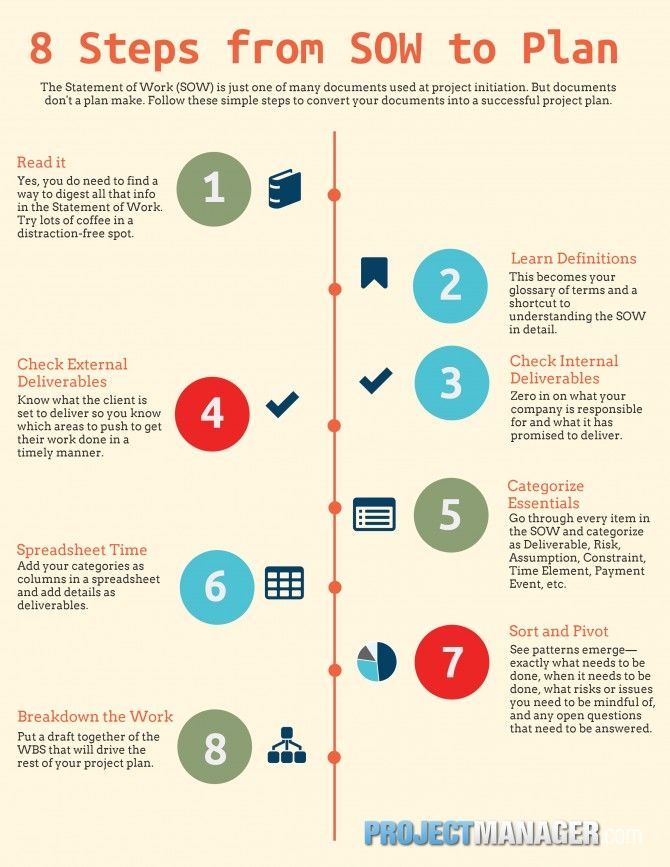 Like the IRA, you can only contribute $6,000 a year or $7,000 if you're over 50. There is one caveat: if you earn more than $122,000 or if you and a spouse earn more than a combined $193,000, your annual contribution room will be reduced. If you earn more $137,000 individually or $203,000 as a couple, you cannot contribute to this account.
Like the IRA, you can only contribute $6,000 a year or $7,000 if you're over 50. There is one caveat: if you earn more than $122,000 or if you and a spouse earn more than a combined $193,000, your annual contribution room will be reduced. If you earn more $137,000 individually or $203,000 as a couple, you cannot contribute to this account.
Simple IRA
Many small businesses don't offer 401(k) plans, which can be expensive to set up and maintain. They are allowed to offer a SIMPLE IRA, which stands for Savings Incentive Match Plans for Employees. It works in a similar way to a 401(k), in that both employees and employees can contribute funds, which reduce each side's taxable income by the amount that each party invests. For 2022, the annual contribution limit for SIMPLE IRAs is $14,000, up from $13,500 in 2021. Workers age 50 or older can make additional catch-up contributions of $3,000, for a total of $17,000. Employers can only contribute up to 3% of their staff member's annual compensation. Contributions can grow tax deferred, until the age you have to withdraw.
Contributions can grow tax deferred, until the age you have to withdraw.
Traditional 401(k) plans
A 401(k) is a retirement account offered by a company for its employees. Contributions into this account are pre-tax, which means that like the traditional IRA they can grow on a tax-deferred basis. You will have to pay the taxman when you withdraw those funds, but if you're in a lower tax bracket in retirement than you were during your working years, then that tax hit shouldn't be too great.
There are several benefits to the 401(k). One is that the contribution limit is much higher than it is with an IRA. Workers who are younger than age 50 can contribute a maximum of $20,500 to a 401(k) in 2022, up from $19,500 in 2021, or $26,000 if you're over 50. Employers are also allowed to match contributions — though the percentage of contributions they match and the amount matched per employee dollar does vary. Using Vanguard Group-managed retirement plans as an example, in 2019 it reported an average employee contribution rate of 7. 0%, and average employer contribution rate of 3.7%.
0%, and average employer contribution rate of 3.7%.
In 2022, the total employer and employee contributions combined cannot exceed $61,000 or 100% of your salary (that's $67,500 for those under 50 and older). There's also a lifetime contribution limit of $305,000. Another key feature is that money gets automatically removed from your check and put into the 401(k), so you don't have to worry about moving those dollars into the account yourself.
Like the traditional IRA, you will get hit with a 10% tax if you withdraw money before you turn 59 1/2. However, for now, you can remove up to $100,000 from a 401(k) if you or your spouse has lost a job or you've been negatively impacted by Covid-19 without the 10% withdrawal penalty.
Roth 401(k)
This is an employer-sponsored account that's funded with after-tax dollars. Like the Roth IRA, contributions are not tax deductible, but you also won't get hit with a tax bill when it comes time to withdraw. Like a traditional 401(k), both employees and employers can contribute, but there are limits. The maximum amount you can contribute to a Roth 401(k) for 2022 is $20,500 if you're younger than age 50. This is an extra $1,000 over 2021. If you're age 50 and older, you can add an extra $6,500 per year in "catch-up" contributions, bringing the total amount to $27,000. Contributions generally need to be made by the end of the calendar year.
The maximum amount you can contribute to a Roth 401(k) for 2022 is $20,500 if you're younger than age 50. This is an extra $1,000 over 2021. If you're age 50 and older, you can add an extra $6,500 per year in "catch-up" contributions, bringing the total amount to $27,000. Contributions generally need to be made by the end of the calendar year.
You can split contributions between a regular 401(k) — using pre-tax dollars — and a Roth 401(k), but your combined investments can't exceed the maximum contribution amount. This account is ideal for those who think they may be in a high tax bracket in retirement, where they would then have to pay a potentially hefty tax bill to Uncle Sam.
There are ways to roll money over from one of the above accounts to another — such as from a traditional IRA to a 401(k) and vice-versa — but it's a good idea to get help from a financial advisor before doing anything.
watch now
Simplified Employee Pension (SEP) Plans
If you're a self-employed individual looking to save for retirement, then the SEP plan may be the best option for you.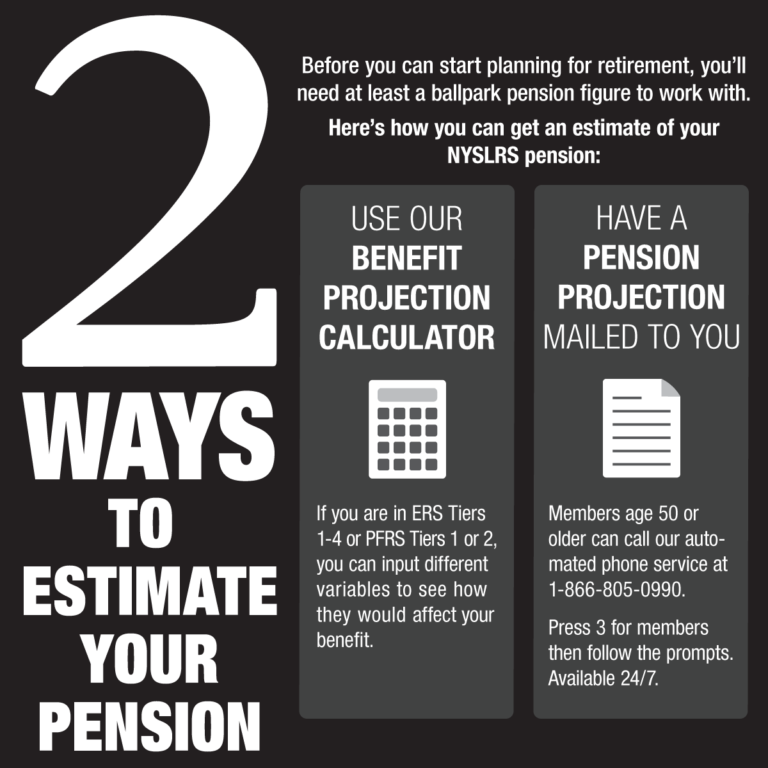 This account, which can only be opened by a business owner with one or more employees or someone who earns freelance income, is similar to a traditional IRA in that pre-tax contributions reduce your taxable income (or the company's depending on who is contributing) and money can grow tax-deferred until you remove it in retirement. For the self-employed and small business owners, the SEP IRA contribution limit was raised to $61,000 in 2022, up from $58,000 in 2021. You can also put money into an employee's account, however, unlike a 401(k), which is more expensive to set up than a SEP, the staffer cannot contribute to his or her own SEP.
This account, which can only be opened by a business owner with one or more employees or someone who earns freelance income, is similar to a traditional IRA in that pre-tax contributions reduce your taxable income (or the company's depending on who is contributing) and money can grow tax-deferred until you remove it in retirement. For the self-employed and small business owners, the SEP IRA contribution limit was raised to $61,000 in 2022, up from $58,000 in 2021. You can also put money into an employee's account, however, unlike a 401(k), which is more expensive to set up than a SEP, the staffer cannot contribute to his or her own SEP.
Years ago, retirement-focused investors would have likely put their money in a balanced mutual fund, which typically consists of 60% equities and 40% bonds. While that asset mix is still popular among savers today — you get some growth from stocks and some protection from bonds — investors now have more choice.
Stocks for growth
The majority of savers still buy stocks – either directly or through a mutual fund or exchange-traded fund – which are shares in a publicly listed company. Stock prices tend to rise over the long-term, which is why people buy them. Since 1926, the S&P 500 has posted a 10.24% average annual return with dividends reinvested, according to S&P Dow Jones Indices. In other words, if you invest in equities in your 30s and retire in your 70s, there's a high likelihood that your money will have grown over those 40 years.
The downside is that stocks can fall. In the Great Recession of 2008 and the more recent pandemic stock market plunge, stock prices dropped by more than 35%, which caused a lot of problems for those in and nearing retirement.
Fortunately, while all stocks fluctuate in price, there are a lot of different kinds to choose from depending on your risk tolerance level.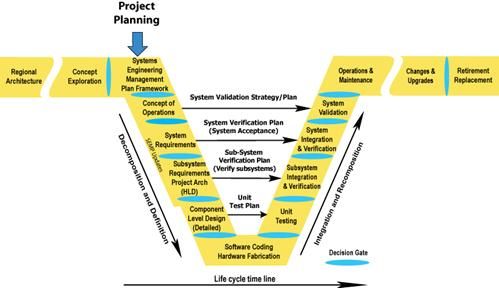 If you're a more aggressive investor you might tilt a stock portfolio to sectors with higher growth potential, but also more volatility, such as technology, while more conservative investors might focus on blue-chip companies in sectors such as financials, consumer staples or industrials, where there traditionally has been less potential for the biggest gains, but also less volatility. But all stocks carry risk of losses and volatility profiles have been changing in recent years. The best way to limit exposure to stock volatility is investing through diversified equity funds rather than single-stocks or narrow sector investments.
If you're a more aggressive investor you might tilt a stock portfolio to sectors with higher growth potential, but also more volatility, such as technology, while more conservative investors might focus on blue-chip companies in sectors such as financials, consumer staples or industrials, where there traditionally has been less potential for the biggest gains, but also less volatility. But all stocks carry risk of losses and volatility profiles have been changing in recent years. The best way to limit exposure to stock volatility is investing through diversified equity funds rather than single-stocks or narrow sector investments.
Bonds for safety
Bonds are another popular investment for savers as they can move a lot less in price than stocks. Investors lend money to a government or company in exchange for an annual payment based on a predetermined interest rate. At the end of that bond's term — usually between one and 30 years — you get back your original investment. Investors like bonds for two reasons: they get some guaranteed annual income and there's less risk, depending on the kind of bond you buy, of losing any money. Because of this, bonds tend to fluctuate less than stocks and so they balance out a portfolio's overall ups and downs.
Investors like bonds for two reasons: they get some guaranteed annual income and there's less risk, depending on the kind of bond you buy, of losing any money. Because of this, bonds tend to fluctuate less than stocks and so they balance out a portfolio's overall ups and downs.
Bonds aren't perfect, however. First of all, there are different kinds of bonds with different risk levels. Generally, Treasury bonds, which are fixed income securities issued by the federal government, have little risk of defaulting. Even with America's high debt load, they're going to pay the interest on their loans. The same can't be said for certain municipalities, which also raise money through bond issues, or companies that may be in financial trouble. If an issuer defaults, your bond could be worthless.
As well, these days interest rates are so low that you can barely earn any money from holding fixed income. Also, when bond yields rise, prices drop and vice versa. If you need to sell your bond before the maturity date and yields climb, you'll have to sell it for a lower price than you bought it for. There's something else: Most individuals don't hold actual bonds — they tend to own bond funds, which hold a number of fixed income instruments, as buying a single bond is difficult for the average person to do. That fund's value could fluctuate depending on where interest rates go. With rates so low, many people think that at some point interest will have to rise which could negatively impact the price of your bonds. Still, if you're worried about the stock market at all, then bonds will usually help smooth out the ups and downs.
There's something else: Most individuals don't hold actual bonds — they tend to own bond funds, which hold a number of fixed income instruments, as buying a single bond is difficult for the average person to do. That fund's value could fluctuate depending on where interest rates go. With rates so low, many people think that at some point interest will have to rise which could negatively impact the price of your bonds. Still, if you're worried about the stock market at all, then bonds will usually help smooth out the ups and downs.
Twenty/20
Alternative asset classes
There are many other investments to choose from and most experts recommend holding about 5% to 10% of assets in things other than stocks or bonds. Gold is a popular investment because the yellow metal's price tends to rise during recessions and in big market declines. Depending on your level of sophistication, you can also purchase other kinds of commodities, like oil or silver, or dabble in futures and options. It's a good idea to talk to a professional before making any outside-the-box investment decisions.
It's a good idea to talk to a professional before making any outside-the-box investment decisions.
There are a variety of funds types to consider when saving for retirement. Here are the most popular options.
Actively managed mutual funds
These funds have been around for decades and are still the most-popular kind of security among retail investors. They hold a variety of stocks or bonds, and sometimes both, in one investment vehicle. Mutual funds are ideal for people who don't want to choose their own stocks. Instead, a professional fund manager can do it for you. If you want to own a bunch of international stocks, but don't want to pick individual companies, then buy an international stock fund. The same goes for tech stocks, U.S. stocks and corporate bonds — there's a fund for everything. The main drawbacks are fees and flexibility. Because someone else is doing the stock picking, fees are higher on actively managed mutual funds than on other kinds of investment vehicles.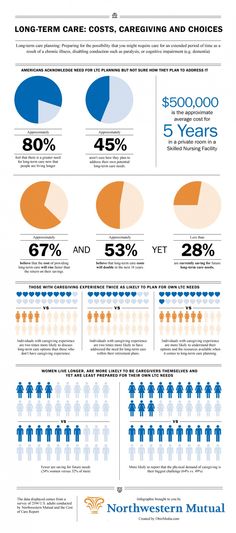 You also can't buy or sell them during the day as they're only priced after the market closes.
You also can't buy or sell them during the day as they're only priced after the market closes.
watch now
Index funds
Index funds are similar to active mutual funds, except there's no stock picker. These funds track a benchmark index, like the S&P 500 or the broad-based MSCI World Index. One of the issues with traditional mutual funds is that most don't beat their benchmarks especially when you factor in the higher fees. Index funds were developed to avoid underperformance — returns are the same as the index they follow. There is a management fee, but it's a lot less than what you might find on a traditional mutual fund. Like active mutual funds, you can't sell them during the day and they only get prices after the trading day is over.
Exchange-traded funds
ETFs are like traditional mutual funds in that they hold a basket of securities, like stocks or bonds, and they're like index funds in that many track a benchmark. They're different, though, in that they trade on a stock exchange, which means they're priced in real-time and can be bought and sold at any point during the day.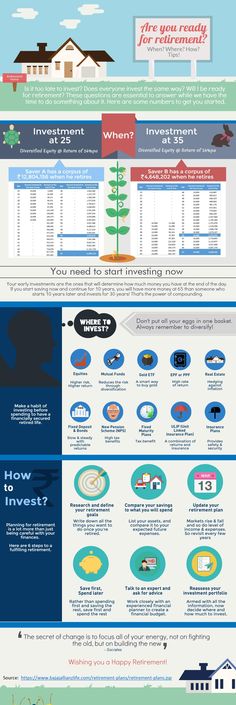 That's less important for retirement investors who hold stocks for the long-term, but still, you never know when you might need to sell something. Most importantly, index ETFs are cheap. Many come with no management expense fees, while others have fees between 2 basis points and 10 basis points (0.02% and 0.10%). That's why they have seen their popularity soar — as you'll see later on, the more you can save on fees, the more money you can put towards your retirement.
That's less important for retirement investors who hold stocks for the long-term, but still, you never know when you might need to sell something. Most importantly, index ETFs are cheap. Many come with no management expense fees, while others have fees between 2 basis points and 10 basis points (0.02% and 0.10%). That's why they have seen their popularity soar — as you'll see later on, the more you can save on fees, the more money you can put towards your retirement.
Target date funds
One of the most popular 401(k) investments these days are target date funds, which are a class of all-in-one mutual funds or ETFs that adjust their asset class mix automatically as you age. For instance, someone who's in their 30s in 2022 might hold a 2060 target date fund, which, right now, might hold 90% stocks and 10% bonds. As you age, the stock and bond mix will self-adjust. Once the fund reaches its target date, the allocation shifts to a 50/50 portfolio—so in the year 2060, this target date fund's allocation will consist of 50% stocks and 50% bonds. The allocation will continue to shift toward bonds for approximately seven years after the designated date
The allocation will continue to shift toward bonds for approximately seven years after the designated date
By becoming more conservative, there's less of a chance of losing money in the market in the few years leading up to retirement. In many employer-sponsored retirement plans, target date funds are now the default investment choice if investors don't actively make investment selections.
Build your portfolio
A lot of people like investing on their own, but when it comes to retirement savings it's a good idea to work with a financial advisor who has a certified financial planning designation. Here are a few things to look for in a good advisor.
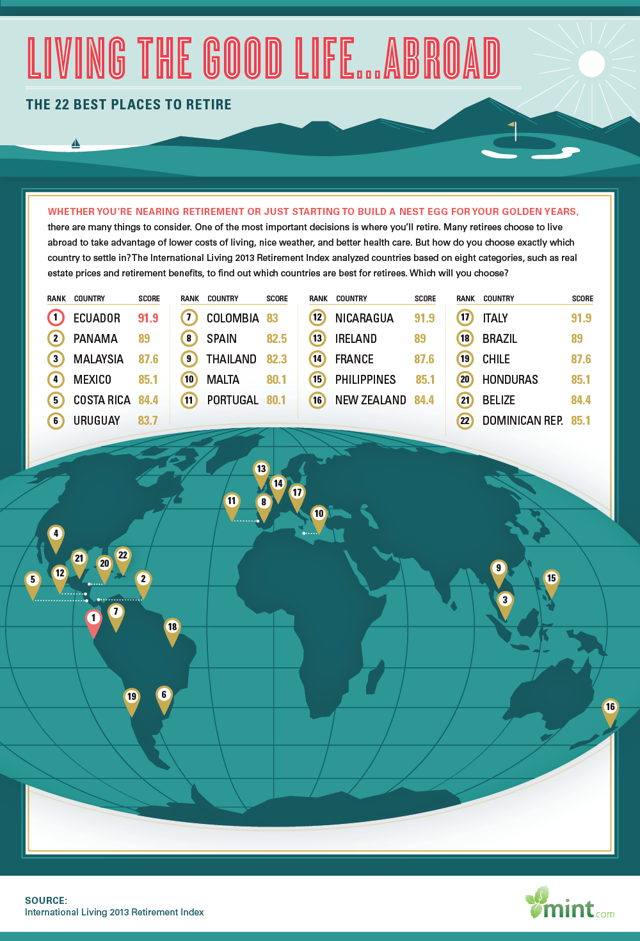 The latter are usually called fee-only planners and some people think they're more objective, since they're not getting paid by anyone else but you.
The latter are usually called fee-only planners and some people think they're more objective, since they're not getting paid by anyone else but you.One of the first conversations you'll have with an advisor is around your time horizon and risk tolerance levels, which are two key things to consider when building a portfolio.
Most advisors tell their clients to get more conservative as they get older because there's less time to recover from a drop.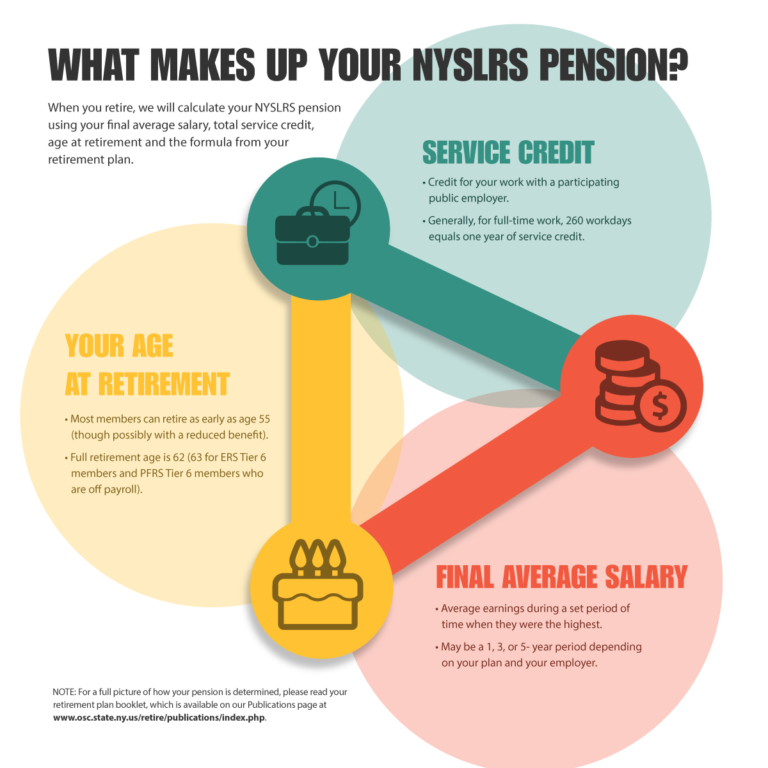 That doesn't mean you need to hold more bonds than stocks, but if you had, say, an 80% stock and a 20% bond mix, then you may want to be closer to 50-50 come retirement. This is a rule of thumb, though many people reach retirement with a big nest egg and still can keep a good portion of their assets in stocks. Just make sure that any money you need for day-to-day living is not subject to market ups and downs.
That doesn't mean you need to hold more bonds than stocks, but if you had, say, an 80% stock and a 20% bond mix, then you may want to be closer to 50-50 come retirement. This is a rule of thumb, though many people reach retirement with a big nest egg and still can keep a good portion of their assets in stocks. Just make sure that any money you need for day-to-day living is not subject to market ups and downs.
Think about fees
It's important to assess fund management and trading fees since they can eat into profits. Even do-it-yourself investors typically have to pay commissions on some trades. Here's an example: If you invest $10,000 in a fund with a 2% fee, and if you assume a 5% rate of return over 30 years, you'll end up paying $19,643 dollars in fees. If you pay 0.5 % in fees, which is possible to do, you will fork over $6,034. That's a big difference.
Active mutual funds tend to be more expensive than index funds and exchange-traded funds, which, in most cases, passively track a market index like the S&P 500. Fees on active funds have come down due to the pressure from index funds and ETFs. According to the Investment Company Institute, the average equity mutual fund fee is now roughly 0.5%. But most index ETFs and index mutual funds remain cheaper — a few ETFs even launched in recent years with no fees at all. There's a major movement towards lower-fee investments, in general, even if not zero-fee, so expect more funds to drop their prices in the coming years, and some active mutual fund companies are starting to launch their own active ETFs as well.
Fees on active funds have come down due to the pressure from index funds and ETFs. According to the Investment Company Institute, the average equity mutual fund fee is now roughly 0.5%. But most index ETFs and index mutual funds remain cheaper — a few ETFs even launched in recent years with no fees at all. There's a major movement towards lower-fee investments, in general, even if not zero-fee, so expect more funds to drop their prices in the coming years, and some active mutual fund companies are starting to launch their own active ETFs as well.
Despite bouts of volatility, the U.S. stock market as measured by the performance of the S&P 500 Index has appreciated in value significantly since the 1980s.
CNBC
While your investment portfolio is a big part of the net worth equation — which you can calculate by adding up the value of your assets and subtracting your debt — it's not the only thing that can potentially contribute to your financial well-being in retirement.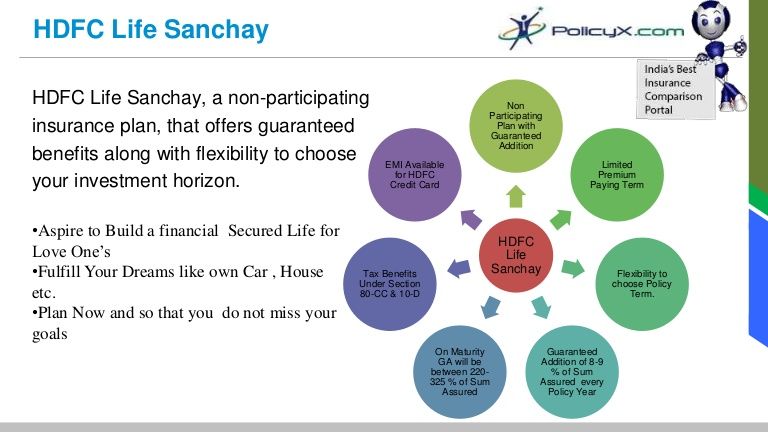 Here are five ways to increase your net worth.
Here are five ways to increase your net worth.
Depending on where you live and when you purchased your abode, a house can end up being your most valuable asset and a lot of people do sell their home later in life and then use that money to help fund their retirement goals. Real estate can be a great asset because it tends to rise in value over time — though as we saw during the Great Recession, that's not a guarantee by any means. While renting can be cheaper, and you can then invest the difference and potentially earn more over time than you would on a house, real estate essentially forces you to save. As you pay down your mortgage, and as the value of your property rises, your net will increase.
A business can add a lot of value to someone's net worth — or not. While many businesses do provide a decent living for their owner, they're an illiquid asset, often hard to value that takes time to sell. Putting a price on a business is a lot harder than coming up with a sale price for a home, though, so talk to an expert who can help you set a valuation and determine how much your operation may net.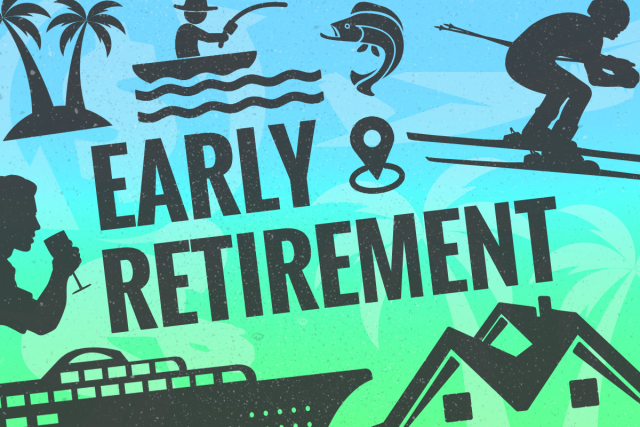
Most people want to earn increasingly larger amounts over their lifetime. The more money you have the more you can save, put toward debt, use on buying other assets and more.
Decreasing debt increases your net worth, so, over time, do what you can to pay down your mortgage, pay off your car loan and reduce any credit card debt. At the same time, consider cutting back on some of your expenses. The lower your expenses the more you're worth — and the more you can save.
This is a little different than the rest, but your family's net worth will, of course, drop significantly if you unexpectedly pass away and can't earn a living anymore. To protect them, consider buying life insurance. It won't help you in retirement (though, some kinds do come with an investment component that you can tap into later in life) but it will help your spouse and children stay afloat if something goes awry.
Josephine Flood | CNBC
How to recover from a setback
Life does not move in a straight line, which means everything from your net worth to your investments to your retirement plan will likely experience a setback at some point. You could lose a job, the market could crash, you could face a health-care crisis and more. The key with all of this is to not panic and stick to your plan.
You could lose a job, the market could crash, you could face a health-care crisis and more. The key with all of this is to not panic and stick to your plan.
Of course, that's easier said than done, especially when it comes to the stock market. In March 2020, when markets dropped by about 35% due to the novel coronavirus pandemic, many investors no doubt felt an extreme sense of panic and they likely wanted to sell out of everything, fearing that markets would drop further and wipe out their nest eggs. While that's a normal reaction, selling out may be the worst thing you can do since you can miss out on recouping those losses if there is an upswing. Few investors can successfully time the market.
At the end of September 2020, the S&P 500 was up about 1% on the year, and up 46% from the March 23, 2020 market bottom. If you sold out and and haven't bought back in yet, you would have lost a lot of money instead of being up on the year. Furthermore, despite the continued challenges from Covid-19 the S&P 500 finished at a record high, up nearly 27% in 2021. As we mentioned earlier, the S&P 500 has posted a 10% annual return, on average, since 1920 and about a 6% annual average return since 2000. So, while there are down years, the market is up more than it's not.
As we mentioned earlier, the S&P 500 has posted a 10% annual return, on average, since 1920 and about a 6% annual average return since 2000. So, while there are down years, the market is up more than it's not.
watch now
When the market does fall, don't panic. Keep contributing your monthly amount — while you may lose some of it as the market falls, you'll also end up buying stocks at the bottom, which will increase in value significantly as stocks rise — and, if you lose your job or are worried about an income reduction, review your budget to see where you can cut back. Try and leave savings alone until that's no longer possible.
If you do feel overwhelmed, then that could be a sign that your risk tolerance is out of whack. If you're worried about losing too much, then you may need to be in a more conservative portfolio where a market decline won't impact your assets — or your psyche.
Josephine Flood | CNBC
With age, the risk of health problems increases, which can negatively affect the family budget. Retirement is a responsible step in the life of any person, but it is worth taking care of your well-being after the end of your career at a young age. In this article, we will look at how to maintain control over the budget and save money for a comfortable retirement.
Retirement is a responsible step in the life of any person, but it is worth taking care of your well-being after the end of your career at a young age. In this article, we will look at how to maintain control over the budget and save money for a comfortable retirement.
Think about your plans for the future, calculate possible expenses for basic needs, as well as additional expenses, such as entertainment and other needs. Although you are now financially independent, in adulthood you may need funds for treatment or special care. Determine if your pension payments will be enough to cover these costs, or if you need additional funds. You can calculate the size of the future pension on the website of the Pension Fund of Russia.
Evaluate your assets, for example, your savings, do not forget also about debts and mandatory payments, if any. So you can understand whether you will have enough funds for basic needs, as well as for additional expenses in case of unforeseen circumstances.
It is important to understand that income tends to decline closer to retirement age. Based on this, you need to think about what money can be spent on, and how you can reduce and / or control your expenses. Analyze your needs and consider which expenses can be cut without sacrificing quality of life. Of course, cutting costs changes the way of life, but in this way you can look more confidently into the future.
Try to write down all expenses, not just basic ones like food and utilities, but also non-obvious and small ones like cigarettes or snacks. As a rule, a lot of money is spent on little things. Some expenses, such as morning coffee on the way to work, may have become a habit, but if you exclude them, you can see significant savings.
You can save up for retirement yourself with the help of funded and pension insurance. The presence of such a policy will provide you with a lifetime pension, which will become an airbag for you, regardless of the economic situation in the country.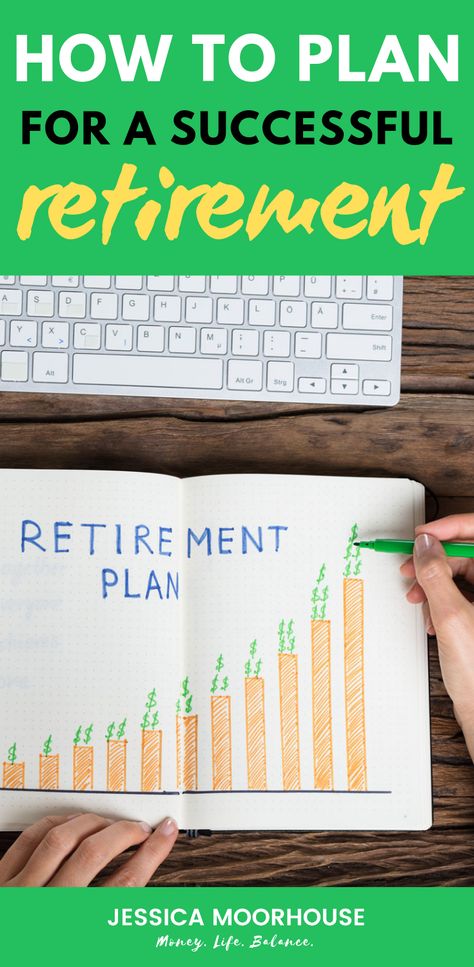 During the accumulative period of the policy, you can receive an annual social tax deduction. Also, for the entire period of insurance, there is protection against the risks of death and disability (an analogue of disability groups 1 and 2), which is an advantage compared to deposits. You can calculate the amount of the guaranteed payment at the stage of applying for the policy.
During the accumulative period of the policy, you can receive an annual social tax deduction. Also, for the entire period of insurance, there is protection against the risks of death and disability (an analogue of disability groups 1 and 2), which is an advantage compared to deposits. You can calculate the amount of the guaranteed payment at the stage of applying for the policy.
MetLife offers its clients three types of savings and pension insurance:
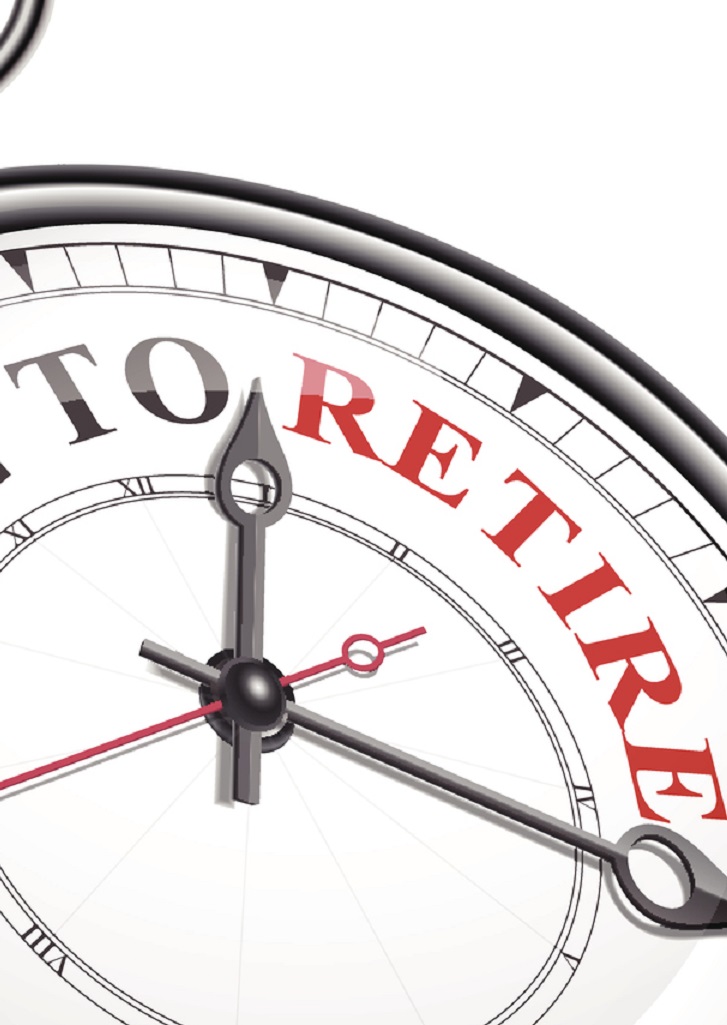 The program includes such a wide range of risks, for example, death, the diagnosis of a critical condition or disease (cancer, heart attack, stroke, etc.), which led to disability, an accident. At the end of the policy, the insured person receives a guaranteed amount of savings and investment income, if any.
The program includes such a wide range of risks, for example, death, the diagnosis of a critical condition or disease (cancer, heart attack, stroke, etc.), which led to disability, an accident. At the end of the policy, the insured person receives a guaranteed amount of savings and investment income, if any. Benefits of MetLife's programs include a wide range of risks, flexible insurance terms and frequency of premium payments.
For details of each program, please contact the company's financial advisors. They will form an individual offer especially for you, taking into account your goals, objectives and opportunities. Most importantly, a financial advisor will accompany you throughout the duration of the policy, which will allow you to always be in touch with him and receive the necessary information simply and quickly.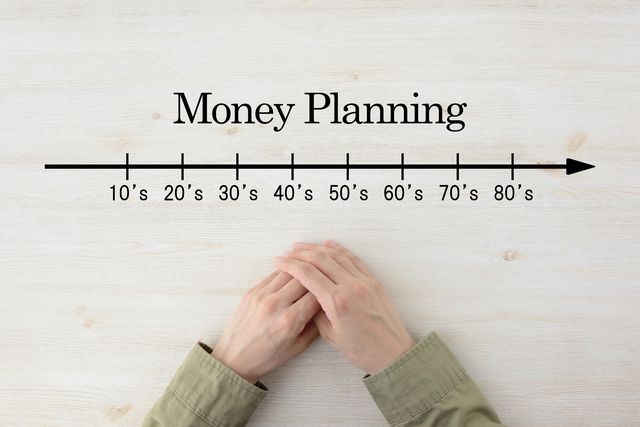
Sergey Kiselev / AGN Moscow
Some people, voluntarily or forced to retire early. They carefully prepare, save money, plan their financial future and spend time on a well-deserved rest. But those who have already retired, including professional retirement consultants, recognize that it is almost impossible to properly prepare for a new stage in life.
A lot of things change after retirement - lifestyle, sense of time, relationships between spouses. With an early exit, the situation may worsen. For example, in the United States, the number of divorces has been declining year on year overall, but rising sharply among people over 50, notes Chris Mamula in an article on early retirement published by The Wall Street Journal. Mamula carefully prepared to leave his career as a physiotherapist at 41. “In my case, my wife and I did not divorce. But due to the drastic lifestyle changes in the first year after my retirement, we went through the most difficult period of our 18-year, generally happy marriage,” writes Mamula.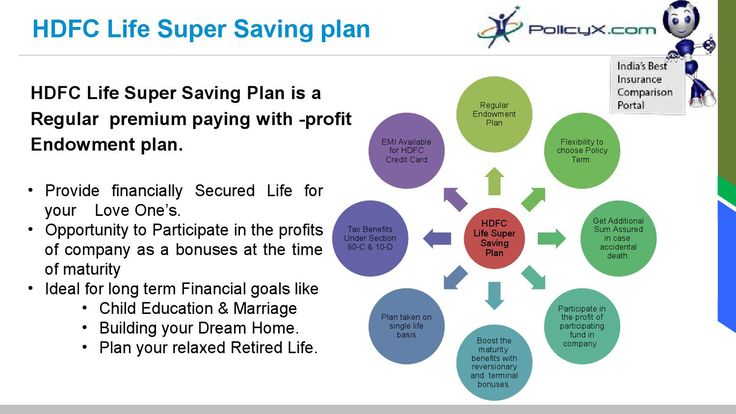
Spouses spend a lot of time apart before retirement, and “being around someone for an extra 8-12 hours a day, you have to adjust,” notes Richard Quinn, whose observations are published by MarketWatch. Quinn “helped thousands of workers prepare for retirement for most of his 40 years” as a consultant before quitting his job in 2010. Relations between spouses can change a lot, especially if both retire early. Therefore, before or immediately after, it is necessary to talk with each other, determine goals and expectations, plans for pastime and interaction, recommends Quinn.
But the biggest lesson Quinn has learned from nearly 10 years of retirement is, of course, about money: income, you think about money all the time.” For some reason, the “what if” thoughts don’t recede: perhaps because we understand there won’t be a second try and therefore our financial resources are limited, Quinn writes.
In the meantime, plans can go to hell right after retirement, notes Mamula. He himself intended to earn extra money as a physiotherapist, thereby providing a transitional period both financially and psychologically. However, he got carried away with two projects - writing a book and blogging: "As a result, the first two years I worked much more, and earned much less (at least for a while) than I planned."
He himself intended to earn extra money as a physiotherapist, thereby providing a transitional period both financially and psychologically. However, he got carried away with two projects - writing a book and blogging: "As a result, the first two years I worked much more, and earned much less (at least for a while) than I planned."
A similar situation exists with expenses. In the five years leading up to his retirement, Mamula and his wife kept a very close eye on spending and expected to stop saving and not withdraw from investments in the first years after the job ended. In 2018, plans were disrupted - but with a positive result: the couple were able to sell the house without a real estate agent, thereby saving $ 15,000. In 2019d. it was the opposite: they bought a smaller house in a place they liked, but it was badly designed from their point of view. More than $30,000 was spent on rebuilding and repairs, which they did not plan to spend. I had to take money from the investment portfolio.
Experts agree: even in retirement, you should try to earn money and replenish spent savings. Following a traditional retirement plan that involves no income and regular withdrawals is like playing for time in a football game trying to keep a score, compares Mamula. In his opinion, in order to “win”, you need to attack: “Never stop growing and learning. Find a fun way to earn extra income."
Quinn considers the ability to replenish savings to be extremely important. “You can't offset significant, unexpected expenses from your core retirement savings without putting your financial future at risk. In addition to the main pension plan, an emergency fund is needed, and after spending it needs to be replenished, ”he writes.
Retirement planning is based on a lot of assumptions, but the longer the retirement period, the more of them and, therefore, the more chances of making mistakes, points out Mamula. Life expectancy needs to be predicted; if a person retires at the traditional age, he has about a third of his life left, but if earlier, about half, or even more.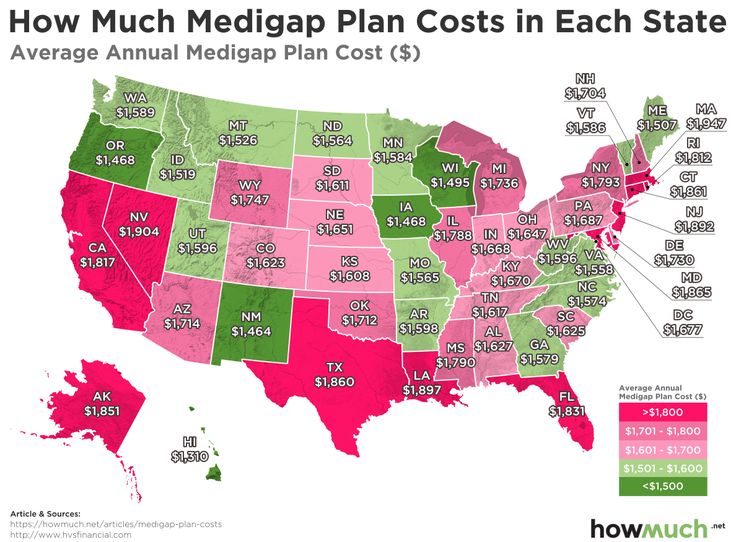 But how can you develop a plan for such a long, and, moreover, indefinite period? Economic factors need to be taken into account, such as future stock market returns, interest rates, inflation rates, but even many professionals do it poorly. Finally, we must predict ourselves, adds Mamula: will we live the way we want, will we like to do what we planned?
But how can you develop a plan for such a long, and, moreover, indefinite period? Economic factors need to be taken into account, such as future stock market returns, interest rates, inflation rates, but even many professionals do it poorly. Finally, we must predict ourselves, adds Mamula: will we live the way we want, will we like to do what we planned?
During the decades of preparation for retirement and after, events may well occur that will seriously affect the financial situation of a retiree, for example, those that Nassim Taleb called "black swans" - poorly predictable, rare events that have large-scale negative consequences. They can also be related to politics: changes in tax laws, reform of the pension system or health care. But it is impossible to predict the essence of these changes and their consequences.
Thus, in 2014, the Russian government froze employers' contributions to the pension savings of Russians for investment (6% of salary) - citizens could transfer them to the management of VEB, private management companies or non-state pension funds. And although some ministers swore that this was a one-time measure, the defrost never happened. And now a new mechanism for pension savings has matured in the bowels of the government - a guaranteed pension plan. In addition, over the past five years, the method of calculating the future old-age pension has been changed, a little-understood system of points has been introduced, the state has refused to index pensions to working pensioners for inflation (because of this, they have less money to save). A crushing blow to the plans of future Russian pensioners was dealt by the decision on a gradual increase from 2019d. retirement age from 55 for women and 60 for men to 63 and 65 respectively. True, the period for savings for retirement has increased for them.
And although some ministers swore that this was a one-time measure, the defrost never happened. And now a new mechanism for pension savings has matured in the bowels of the government - a guaranteed pension plan. In addition, over the past five years, the method of calculating the future old-age pension has been changed, a little-understood system of points has been introduced, the state has refused to index pensions to working pensioners for inflation (because of this, they have less money to save). A crushing blow to the plans of future Russian pensioners was dealt by the decision on a gradual increase from 2019d. retirement age from 55 for women and 60 for men to 63 and 65 respectively. True, the period for savings for retirement has increased for them.
It is clear that many expenses, for example, on maintaining health, will increase with age, but no one knows exactly how and for how long. Some of the funds raised for retirement should be left untouched and allowed to grow so that they can be used in later years - not least to pay for increased medical expenses, Quinn advises.